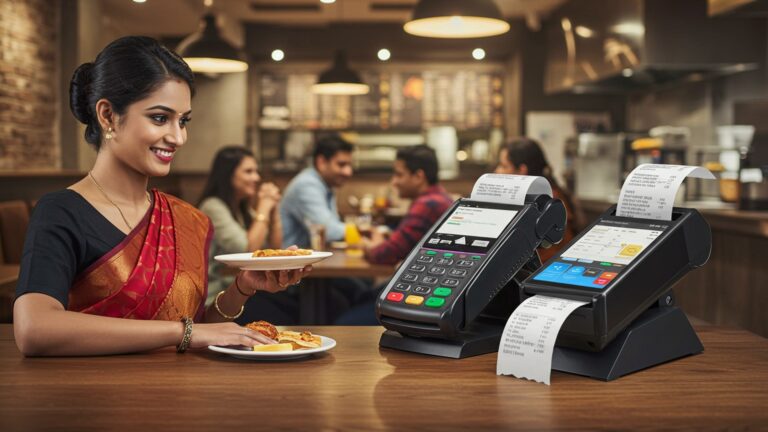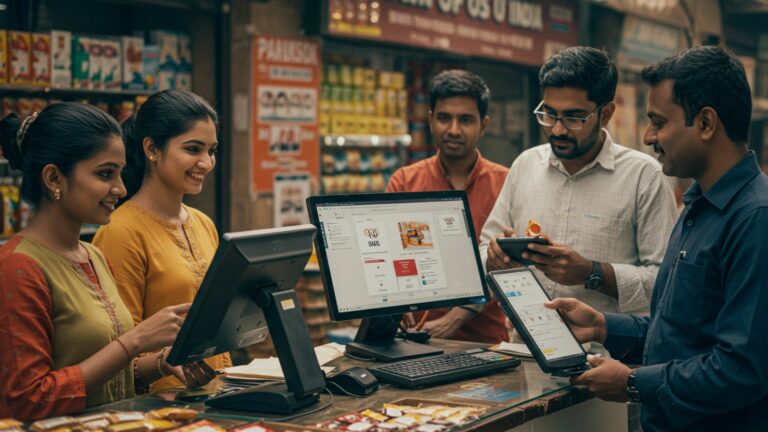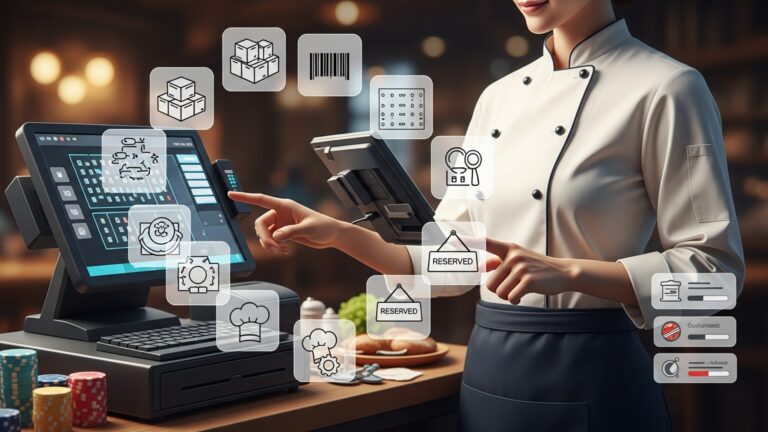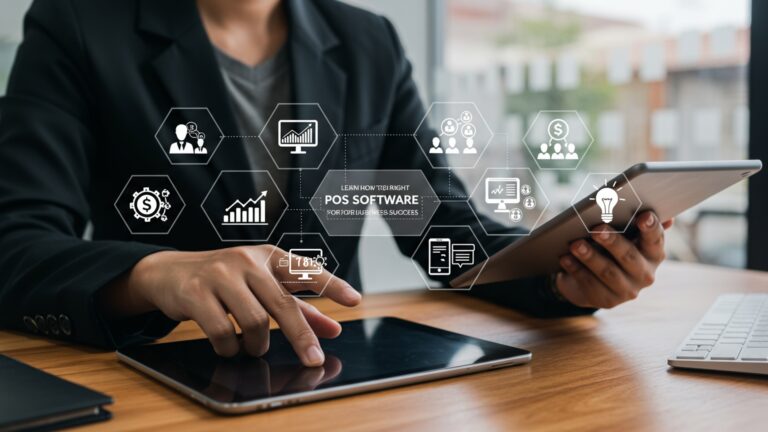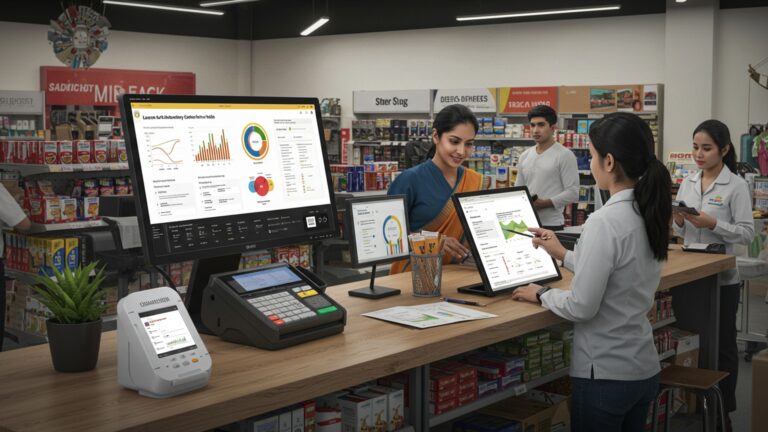How to Choose the Best Restaurant Billing Software India 8 Smart Guide
The vibrant Indian restaurant scene demands more than culinary excellence; it requires seamless operational efficiency, making the choice of restaurant billing software India critical. Obsolete systems struggle with dynamic GST regulations, diverse payment gateways. the explosion of online delivery platforms like Swiggy and Zomato. Today’s advanced cloud-based solutions offer real-time inventory tracking, integrated CRM. granular sales analytics, moving beyond mere transaction processing. They empower businesses to manage everything from contactless QR code ordering to multi-outlet operations, directly impacting profitability and customer satisfaction in a competitive, rapidly digitizing market. Selecting the optimal system ensures regulatory compliance and future-proofs your establishment.
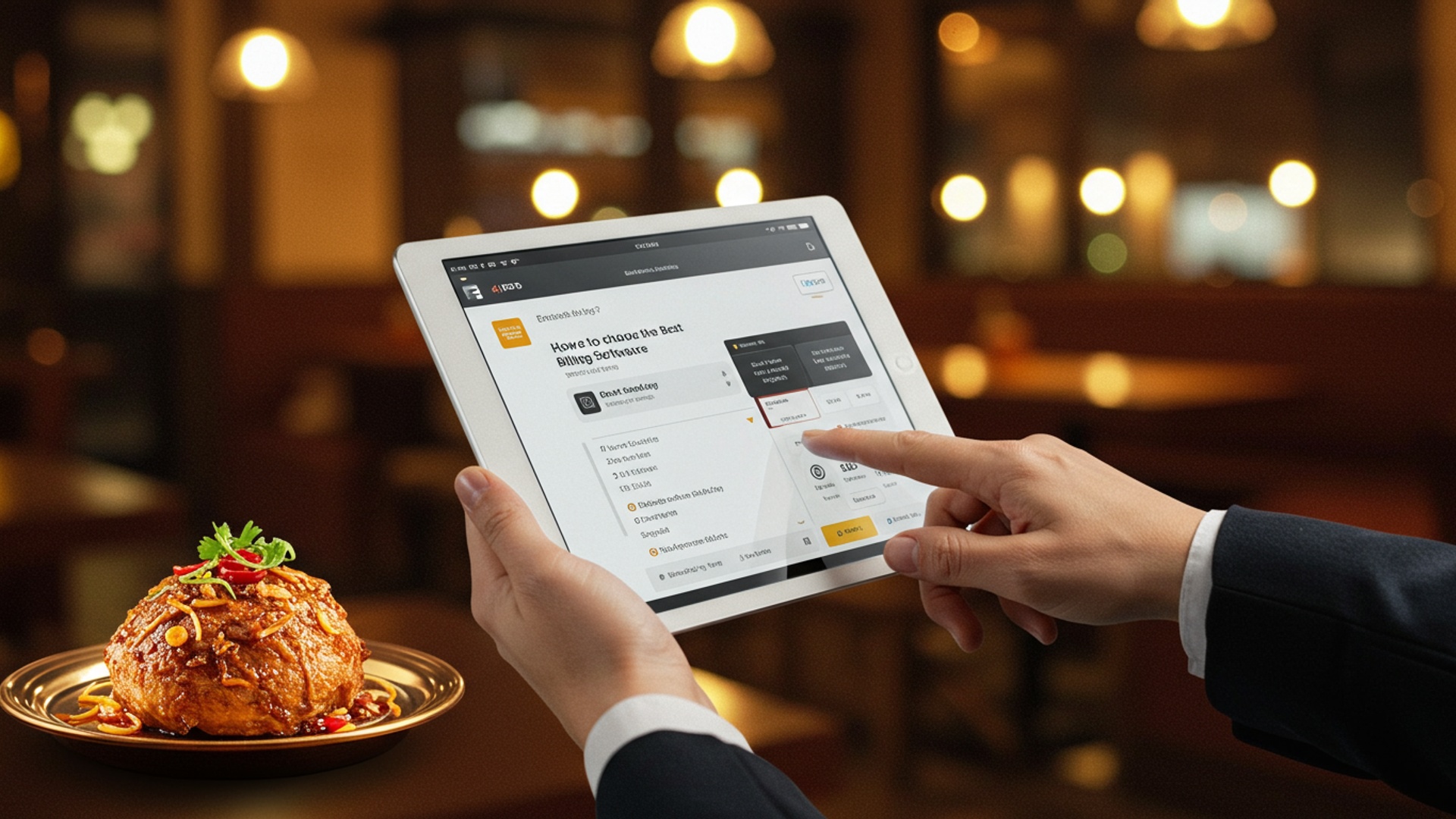
Understanding Your Restaurant’s Unique Needs
Before diving into the myriad of options available for Restaurant billing software India, the first crucial step is to deeply interpret the specific operational nuances of your establishment. Not all restaurants are created equal. neither are their software requirements. A quick-service restaurant (QSR) operating with high transaction volumes and minimal table service will have vastly different needs than a fine-dining restaurant focused on intricate table management, reservations. personalized customer experiences.
- QSRs & Cafes: Prioritize speed, efficient order processing, integration with online delivery platforms (like Swiggy, Zomato). robust takeaway management. Features like rapid billing, combo offers. easy menu updates are paramount.
- Fine Dining & Casual Dining: Focus on advanced table management, reservation systems, split-bill functionality, KOT (Kitchen Order Ticket) management for complex orders. detailed customer profiling for personalized service. Inventory control for high-value ingredients is also critical.
- Bars & Pubs: Require strong inventory management for spirits, cocktail recipe management, happy hour pricing. integration with stock control systems to minimize pilferage.
- Cloud Kitchens: Heavily rely on integrations with multiple online food aggregators, efficient order routing to different kitchen stations. robust reporting on delivery performance.
Consider your current pain points: Is inventory frequently mismatched? Are billing errors common? Is customer feedback difficult to track? Identifying these will help you prioritize features when evaluating a Restaurant billing software India solution. Moreover, think about your future growth plans – will you open more outlets? Will you expand into delivery or catering? Your chosen software should be scalable enough to support your ambitions.
Core Features to Look For in Restaurant Billing Software India
Once you’ve assessed your specific needs, it’s time to evaluate the essential features that any top-tier Restaurant billing software India should offer. These aren’t just ‘nice-to-haves’ but foundational elements for efficient operations.
- POS (Point of Sale) Functionality: This is the heart of any billing software. Look for intuitive order taking, KOT generation for the kitchen/bar, easy modification of orders, split-bill options (by item, by person, or percentage), application of discounts and promotions. seamless cash/card/UPI payment processing. The ability to handle multiple payment methods, especially UPI which is prevalent in India, is non-negotiable.
- Inventory Management: This feature is crucial for cost control and waste reduction. A good system should track raw materials, finished goods, generate purchase orders, manage recipes (e. g. , how much flour goes into a pizza), alert you when stock is low. help identify popular/unpopular items. For instance, a leading restaurant chain in Bengaluru drastically reduced its food costs by 15% after implementing a robust inventory module that linked sales directly to ingredient consumption, allowing for precise reordering.
- Reporting & Analytics: Data is power. The software should provide comprehensive reports on sales (daily, weekly, monthly), profit and loss, item-wise sales, staff performance, peak hours. customer spending patterns. These insights are invaluable for making informed business decisions, optimizing menus. managing staff schedules.
- Customer Relationship Management (CRM): Build loyalty by tracking customer preferences, offering loyalty programs, managing feedback. sending targeted promotions. Imagine being able to greet a repeat customer by name and suggest their favorite dish – that’s the power of integrated CRM.
- Integrations: A standalone billing software is often limited. Ensure it integrates seamlessly with essential third-party platforms such as popular online ordering aggregators (Zomato, Swiggy), various payment gateways, accounting software (like Tally). potentially even staff management or HR systems. This creates a unified ecosystem, reducing manual data entry and errors.
Cloud-Based vs. On-Premise Solutions
One of the most significant decisions you’ll face when choosing Restaurant billing software India is whether to opt for a cloud-based (SaaS – Software as a Service) or an on-premise solution. Each has distinct advantages and disadvantages.
Cloud-Based Solutions:
- Advantages:
- Accessibility: Access your data and manage operations from anywhere, anytime, using any device with an internet connection. Perfect for owners managing multiple outlets or checking reports remotely.
- Lower Upfront Cost: Typically involves a subscription model (monthly/annually), eliminating large initial investments in hardware and licenses.
- Automatic Updates & Maintenance: The vendor handles all software updates, security patches. server maintenance, reducing your IT burden.
- Scalability: Easily scale up or down based on your business needs, adding more terminals or features as you grow.
- Data Security & Backup: Reputable cloud providers offer robust data encryption and regular backups, often more secure than what a small business can manage independently.
- Disadvantages:
- Internet Dependency: Requires a stable internet connection. While many offer offline modes that sync later, a complete outage can disrupt operations.
- Subscription Model: Ongoing costs, which can accumulate over time.
- Less Customization: May offer less deep customization compared to on-premise solutions, though this is changing rapidly.
On-Premise Solutions:
- Advantages:
- Full Control: You own the software and data, giving you complete control over customization, security. updates.
- No Internet Required: Operates independently of an internet connection (after initial setup), ideal for areas with unreliable connectivity.
- One-Time Cost: Often involves a higher upfront cost but no recurring subscription fees (though maintenance contracts are common).
- Disadvantages:
- Higher Upfront Investment: Requires purchasing licenses, servers. potentially hiring IT staff for setup and maintenance.
- Maintenance Burden: You are responsible for all updates, backups, security. troubleshooting.
- Limited Accessibility: Typically restricted to the physical location of the restaurant.
- Scalability Challenges: Scaling up might require significant hardware upgrades.
Here’s a comparison table to help visualize the differences:
| Feature | Cloud-Based (SaaS) | On-Premise |
|---|---|---|
| Initial Cost | Low (subscription) | High (one-time license, hardware) |
| Accessibility | Anywhere, anytime (with internet) | Local network only |
| Maintenance | Vendor managed | Your responsibility |
| Updates | Automatic | Manual, often paid |
| Internet Dependency | High (some offline modes) | Low (after setup) |
| Data Control | Vendor’s server | Your server |
| Scalability | Easy | Requires hardware upgrades |
Ease of Use and Training
Even the most feature-rich Restaurant billing software India is useless if your staff can’t operate it efficiently. The intuitiveness of the user interface (UI) and the ease of training are critical factors that directly impact your operational speed and staff satisfaction.
- Intuitive Interface: The software should have a clean, logical layout that makes sense even to new users. Buttons should be clearly labeled. common tasks (like taking an order, applying a discount, or processing a payment) should be accessible with minimal clicks. A good test is to ask a new employee or someone with basic computer literacy to try a demo – if they pick it up quickly, it’s a good sign.
- Minimal Training Required: High staff turnover is common in the restaurant industry. You don’t want to spend days training every new hire on complex software. Look for systems that offer quick onboarding and come with clear, concise training materials or video tutorials. Many providers offer on-site training as part of their package, which can be invaluable. For instance, a small cafe owner in Delhi shared how their previous system required a week of intensive training for each new cashier. Switching to a more user-friendly Restaurant billing software India reduced this to just a few hours, significantly cutting down on training costs and ramp-up time for new hires.
- Language Support: Given India’s diverse linguistic landscape, check if the software supports multiple languages, or at least has an English interface that is easy for your local staff to grasp.
- Demo and Trial Periods: Always insist on a live demo. Better yet, ask for a free trial period where your actual staff can use the software in a simulated or real environment. This hands-on experience will reveal any usability issues that a sales presentation might miss.
Remember, a system that reduces order errors, speeds up billing. empowers your staff to serve customers better directly contributes to higher customer satisfaction and repeat business.
Scalability and Customization
Your restaurant business isn’t static; it evolves. The Restaurant billing software India you choose should be able to grow and adapt with you. This is where scalability and customization come into play.
- Scalability:
- Multi-Outlet Management: If you plan to expand to multiple branches, the software should offer centralized management. This means you can manage menus, inventory, pricing. reports for all outlets from a single dashboard.
- User Management: As your team grows, you’ll need to add more users (cashiers, managers, chefs). The software should easily accommodate this without performance degradation or complex licensing issues.
- Feature Add-ons: Can you easily add new modules or features (e. g. , online ordering, advanced analytics, loyalty programs) as your needs evolve, without having to switch to a completely new system?
- Customization:
- Menu & Pricing: The ability to quickly update menu items, prices, add new dishes, create combos. manage special offers is essential. Can you customize the menu layout for quick order entry?
- Billing Formats: Restaurants often have specific billing requirements, including branding elements, GST details, service charges. tips. The software should allow for customization of bill formats to meet legal and branding needs.
- User Roles & Permissions: You’ll want to define different access levels for staff. A cashier might only need access to billing, while a manager needs access to reports and inventory. Robust role-based access control (RBAC) is crucial for security and operational integrity.
- API Integrations: For deep customization and future-proofing, check if the software offers open APIs (Application Programming Interfaces). This allows you to connect it with other bespoke systems or emerging technologies that might not be directly supported by the vendor, offering unparalleled flexibility. For example, if you want to integrate with a unique local delivery service or a custom loyalty app, API access is vital.
An example of strong customization is a popular cafe chain in Pune that uses a Restaurant billing software India solution. They were able to integrate their in-house mobile ordering app directly with the POS system using its open API, streamlining their takeaway process and reducing wait times significantly.
Support and Service
Even the most robust software can encounter issues. When that happens, reliable and timely support is paramount. In the fast-paced restaurant environment, downtime means lost revenue and frustrated customers. This is particularly true for Restaurant billing software India, where local support can make a huge difference.
- 24/7 Availability: Restaurants often operate beyond typical business hours. Does the vendor offer round-the-clock support, especially for critical issues? A system crash during peak dinner service requires immediate attention, not a “call back during business hours” message.
- Multiple Support Channels: Look for vendors who offer support through various channels: phone, email, live chat. even WhatsApp. Different issues might be best suited for different communication methods. A quick question might be resolved via chat, while a complex technical problem might require a phone call with screen sharing.
- On-Site Support: While remote support is efficient, sometimes an issue requires a technician to be physically present. This is especially relevant for hardware-related problems or complex network configurations. Ask about their on-site support policy, especially if your restaurant is in a tier-2 or tier-3 city in India.
- Response Time and Resolution: Inquire about their guaranteed response times (SLA – Service Level Agreement) for different severities of issues. What is their track record for resolving common problems? Don’t just take their word for it; check online reviews and testimonials specific to their support quality. For example, a restaurant owner in Mumbai mentioned how their previous software provider took over 24 hours to resolve a billing error, leading to customer complaints. Their new Restaurant billing software India vendor offered a 2-hour resolution SLA, which significantly improved operational reliability.
- Knowledge Base & Self-Help Resources: A comprehensive online knowledge base, FAQs. video tutorials can empower your staff to troubleshoot minor issues themselves, saving time and reducing reliance on direct support.
- Dedicated Account Manager: For larger establishments or multiple outlets, a dedicated account manager can provide personalized support, strategic advice. help you get the most out of your software.
Cost-Effectiveness and ROI
Investing in Restaurant billing software India is a business decision. like any investment, it must provide a return. Understanding the true cost and potential ROI is crucial.
- Understanding Pricing Models:
- One-time Purchase: Common for on-premise solutions. Higher upfront cost. no recurring software fees (though annual maintenance might be extra).
- Subscription Model (SaaS): Most common for cloud-based solutions. Monthly or annual fees, often tiered based on features, number of terminals, or transaction volume.
- Per-Terminal/Per-User: Some vendors charge per POS terminal or per active user, which can add up if you have many staff or outlets.
- Hidden Costs: Always ask for a detailed breakdown of all potential costs. These might include:
- Installation and setup fees.
- Training costs for staff.
- Hardware costs (POS terminals, printers, cash drawers).
- Integration fees for third-party services.
- Annual maintenance or support contract renewals.
- Customization charges.
- Calculating ROI: The benefits of a good Restaurant billing software India extend beyond just processing payments.
- Reduced Errors: Automated calculations, KOTs. inventory tracking drastically reduce human errors, saving money on wasted food and incorrect billing.
- Faster Service: Efficient order taking and billing lead to quicker table turnover and shorter queues, directly increasing sales volume.
- Better Inventory Control: Minimizes waste, prevents pilferage. ensures you always have popular items in stock, leading to significant cost savings (some restaurants report 10-20% reduction in food costs).
- Improved Customer Experience: Faster service, accurate bills. loyalty programs lead to repeat customers and positive word-of-mouth.
- Data-Driven Decisions: Comprehensive reports help you identify best-selling items, peak hours. staff performance, allowing for optimized operations and marketing strategies.
- GST Compliance: A well-designed Restaurant billing software India ensures automatic GST calculation and accurate reporting, simplifying compliance and avoiding penalties. For instance, a small eatery in Jaipur saved considerable time and avoided penalties by switching to a GST-compliant billing system that automated all tax calculations and report generation.
Don’t just look at the sticker price; consider the total cost of ownership (TCO) over 3-5 years and weigh it against the tangible and intangible benefits it brings to your business.
Security and Data Management
In an increasingly digital world, the security of your business data and customer data is paramount. For Restaurant billing software India, this means protecting sensitive sales data, customer details. financial transactions.
- Data Encryption: Ensure that all data, both in transit (when being sent over networks) and at rest (when stored on servers), is encrypted. This protects your details from unauthorized access. Look for industry-standard encryption protocols.
- User Access Control: The software should allow you to set granular permissions for different staff roles. A cashier shouldn’t have access to sensitive financial reports or the ability to alter past transactions. This prevents internal fraud and maintains data integrity.
- Regular Backups: Critical data (sales, inventory, customer details) must be backed up regularly. For cloud-based solutions, inquire about their backup frequency, retention policies. disaster recovery plans. For on-premise systems, you’ll need to establish your own robust backup procedures.
- PCI DSS Compliance: If your software handles credit card transactions directly, it should ideally be PCI DSS (Payment Card Industry Data Security Standard) compliant. This is a set of security standards designed to ensure that all companies that process, store, or transmit credit card insights maintain a secure environment. While your payment gateway handles much of this, the POS system’s role is also essential.
- Compliance with Indian Data Protection Laws: While India’s comprehensive data protection law (DPDP Act) is still evolving, reputable software providers should already adhere to best practices for data privacy and consent, especially when collecting customer insights for loyalty programs. Ask how they handle and store customer data.
- Audit Trails: A good system will maintain an audit trail, logging every significant action taken by a user (e. g. , discounts applied, voids, menu changes). This is invaluable for tracking anomalies, resolving disputes. ensuring accountability.
A real-world scenario highlights this: a restaurant in Hyderabad faced a data breach where customer contact details were leaked from their old, unsecured billing system. This led to a loss of customer trust and a significant reputational hit. Switching to a secure Restaurant billing software India with robust encryption and access controls helped them rebuild confidence and protect sensitive data.
Conclusion
Navigating the myriad of restaurant billing software options in India can feel overwhelming, yet it’s a pivotal decision for your establishment’s future. We’ve explored the smart guide, emphasizing features like seamless KOT management, integrated online ordering for platforms like Swiggy and Zomato. robust GST compliance, which are non-negotiable in today’s dynamic F&B landscape. My personal tip is to not just evaluate features on paper; insist on a live demo with your actual menu items, perhaps even during a simulated peak hour. Observe how it handles a complex order or a last-minute table merge – these real-world scenarios reveal a system’s true efficiency. Consider the trend towards cloud-based solutions, offering unparalleled real-time insights into your sales, inventory. staff performance from anywhere, a crucial advantage when managing multiple outlets or unexpected supply chain hiccups. By making an informed choice, you’re not just buying software; you’re investing in operational harmony, empowering your team. ultimately, ensuring your restaurant thrives. Embrace this decision with confidence, knowing a well-chosen system will streamline operations and pave the way for remarkable growth.
More Articles
7 Essential Android POS Systems for Indian Restaurant Success
10 Essential Android POS Features for Indian Restaurants to Boost Efficiency
A Practical Guide to Implementing Cloud Based POS Software Seamlessly
Mastering POS Software How to Optimize Business Operations for Efficiency
How to Choose the Best POS Software in India A Comprehensive Guide
FAQs
What’s the absolute first thing I should consider when picking restaurant billing software in India?
The very first step is to clearly grasp your restaurant’s unique needs. Think about your size, the type of cuisine, your existing operational flow. what specific problems you want the software to solve. Don’t just look for generic features; identify what’s critical for your daily operations.
How crucial is GST compliance for this kind of software here in India?
GST compliance is absolutely crucial. Any billing software you choose for an Indian restaurant must accurately calculate and apply GST, generate GST-compliant invoices. provide easy-to-export reports for tax filing. Non-compliance can lead to significant penalties, so this is a non-negotiable feature.
My staff aren’t super tech-savvy. Will a new billing system be a nightmare to learn?
Not necessarily! It’s vital to look for software with an intuitive, user-friendly interface. Many modern systems are designed to be easy to learn, even for staff with limited technical skills. Also, inquire about training and support offered by the vendor to ensure a smooth transition for your team.
Beyond just billing, what other features are really useful for an Indian restaurant?
Look for features like inventory management to track ingredients and reduce waste, table management for efficient seating, integration with popular food delivery platforms, customer relationship management (CRM) for loyalty programs. comprehensive reporting tools to gain insights into sales and performance.
What should I look for regarding customer support? I need help if things break down!
Reliable customer support is key. Ensure the vendor offers 24/7 support, preferably with local presence or a dedicated Indian support team. Check their response times, available channels (phone, chat, email). if they offer on-site support for critical issues. Good support can save you a lot of headaches.
Is it possible to try out software before committing to a purchase?
Yes, absolutely! Most reputable software providers offer free trials or detailed demos. Always take advantage of these to test the software with your actual restaurant operations, get your staff’s feedback. ensure it meets your specific requirements before making a financial commitment.
What’s the deal with pricing? Are there hidden costs I should watch out for?
Be very clear about the total cost of ownership. grasp if it’s a one-time purchase, a monthly/annual subscription, or a hybrid model. Ask about setup fees, training costs, annual maintenance charges. any extra fees for additional users, modules, or integrations. Always get a detailed quote to avoid surprises.


